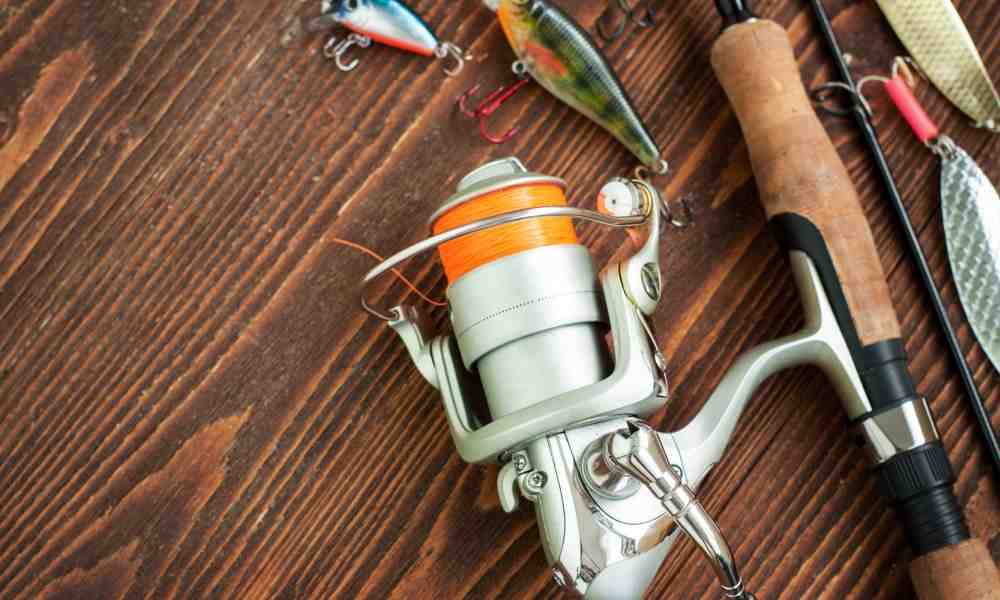What Fishing Line to Use: Braid, Fluorocarbon, Monofilament?

Many fishermen believe that using light fishing lines and small hooks provide more bites, while heavier fishing lines and bigger hooks provide less bite but a stronger chance to catch fish.
This is a good generalisation but it is not always the circumstance. Hence, what fishing line should be used?
A more realistic guideline is to pair the hook and the fishing line to what kind of fish you are trying to catch and the kind of water you are fishing in. If you can’t catch a fish, it means that you need to change your fishing line and hook.
The hollow elastic lines are the most beneficial but they cost the most too, compared to other types of lines.
So what fishing line should be used in different fishing conditions? To give you some ideas, here are the three main types of fishing lines:
Monofilament fishing line
The oldest fishing line used by generations is the monofilament line. It has been used for around 60 years and provides quality and fishing attributes that satisfy many anglers.
Monofilament line is nylon based, and is generally soft and supple. It is easy to cut when you change lures. Advantages of monofilament are:
- It is less expensive compared to other lines
- It is resistant to abrasion
- It absorbs shock by stretching
- It comes in different colors, shades, and strength
- It does not damage spools and guides
- Easy to tie knots in
There are also disadvantages of monofilament that are worth enumerating:
- It is not as durable as braid line
- Since it is made of nylon, it breaks down when submerged in water for 24 hours
Braid fishing line
Braid is made of raw material polyethylene, a synthetic thermoplastic, which is processed into razor thin fibers known as Spectra or Dyneema. It is extremely reliable and strong. Advantages of braid are:
- Small in diameter
- Incredibly strong; twice as strong as monofilament
- Non stretchable
- Very castable
- No memory loops
- Braid does not break down in extreme sunlight
- It comes in several colors
On the other hand, its disadvantages are the following:
- It is very slippery
- It is difficult to cut
- Can be more visible to bass
Fluorocarbon fishing line
Many disadvantages of monofilament are filled by the fluorocarbon line. While the latter appears like monofilament, they are completely different.
Unlike monofilament, fluorocarbon does not absorb water. It does not turn brittle in low temperatures; also, fluorocarbon resists ultraviolet light and chemicals. Even if it comes in contact with gasoline or sunscreen, it does not break or damage.
Fluorocarbon fishing line is made through an extrusion and chemical bonding process that uses carbon, fluorine and hydrogen. It results to a dense composition and is much heavier than monofilament. It also has the ability to refract light. Other advantages include:
- Relatively invisible
- Does not stretch
- Difficult to be visible underwater
There are also drawbacks of using fluorocarbon. These include:
- It is not abrasion resistant
- It sinks
Fishing line comes in different colors too. Each of these colors are ideal for different kinds of fishing conditions.
Here are the color selections of fishing line:
- Low visibility clear. It is great for clear lakes and streams where fish are less likely to bite.
- High visibility gold. It is a bright color that can be easily detected. It is ideal for fishing conditions in muddy, stained waters.
- High visibility green. For fishing in waters with thick algae or vegetation, this high visibility green is ideal to use.
- Clear/ blue fluorescent. Fish can hardly see this clear fluorescent color underwater. But when it is illuminated by sunlight, it is easier to see.
Fishing is a fun hobby and a good potential source of income. Choosing the best fishing line to use with each fishing condition improves your catch.

